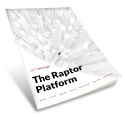NEW EAGLE SUPPORT
The Basics
Getting StartedSet up your Wiki access with one of our specialists who can assign you a login and then guide you through our Product Wiki.
Get Started
Product WikiAccess and download our product datasheets, user manuals, schematics and other useful information for your solution.
Access Wiki
Becoming an Expert
Extra Support
Additional
Resources
What is Software Maintenance and Why Should I Pay for It?
Read More
Need to Update Your Software Maintenance Plan?
Contact Us


